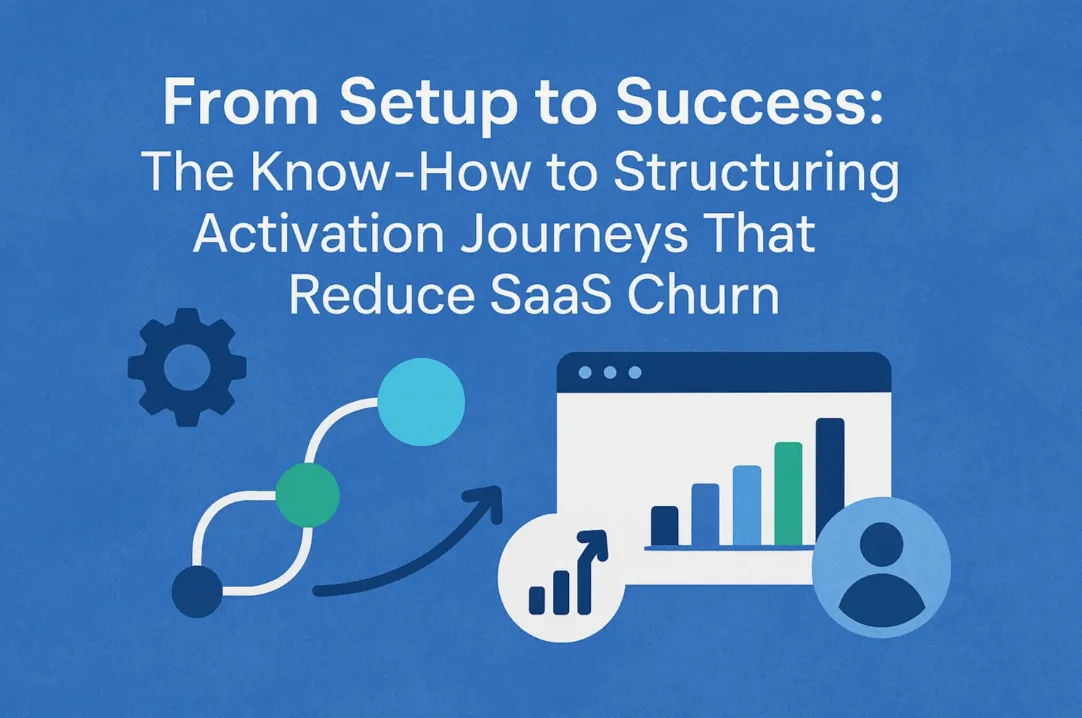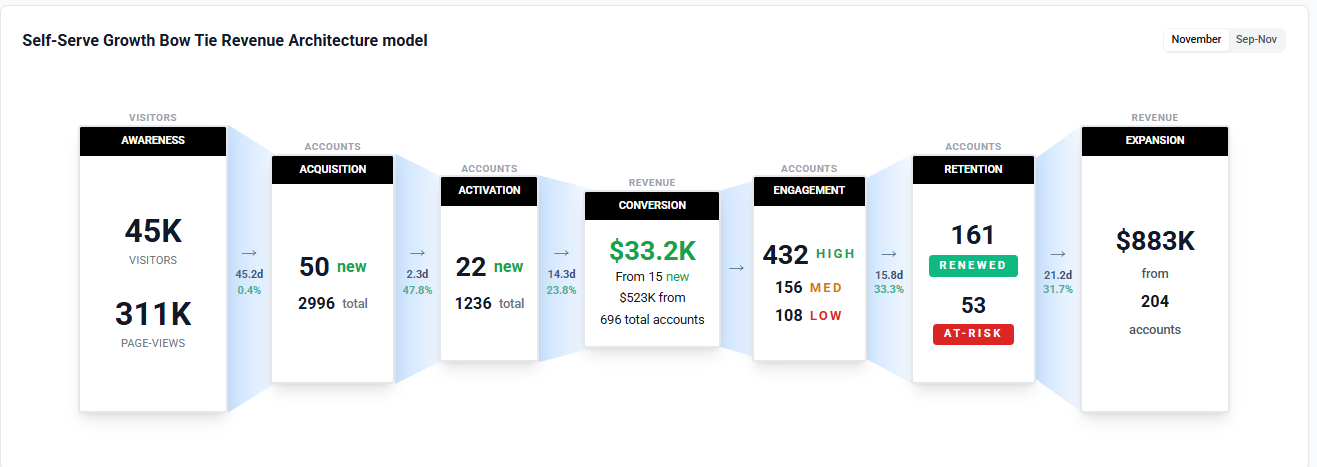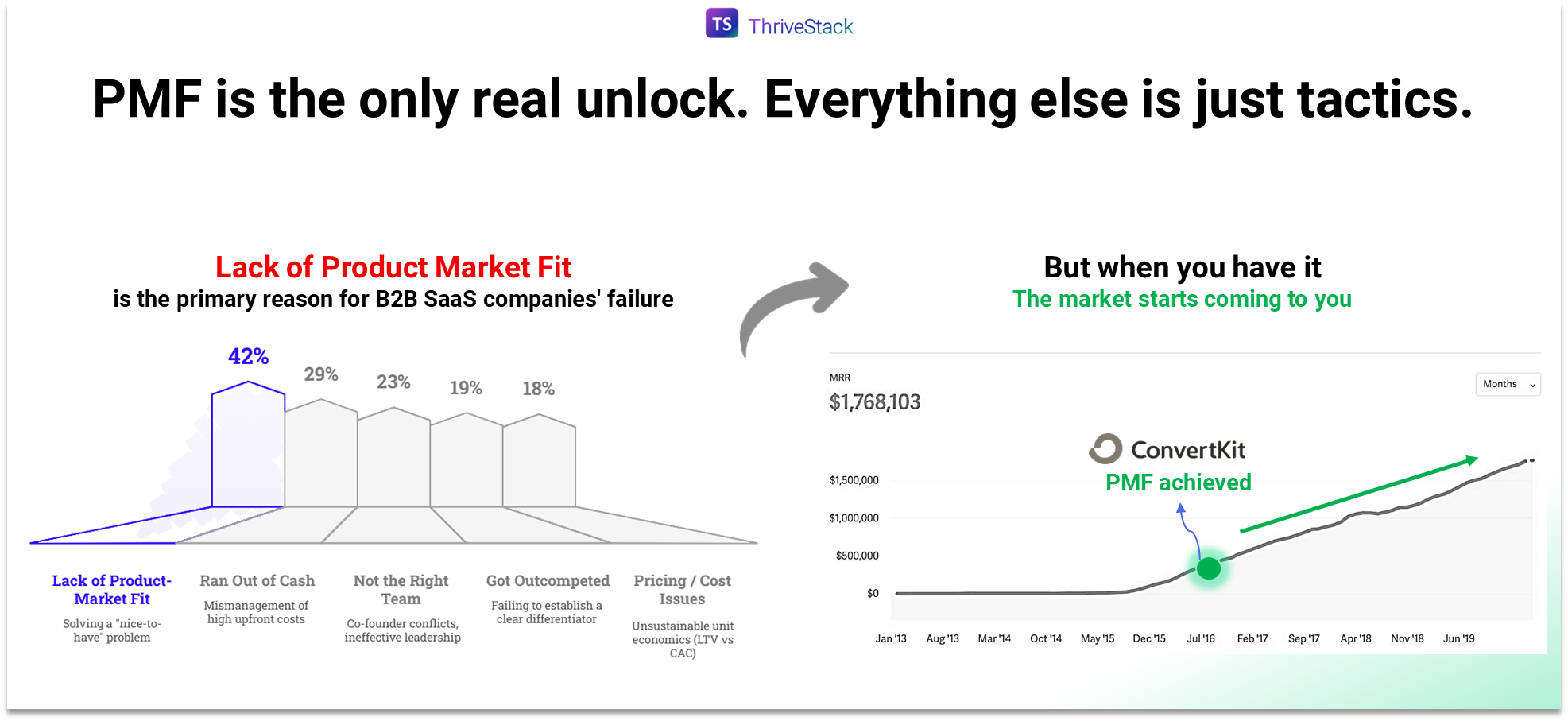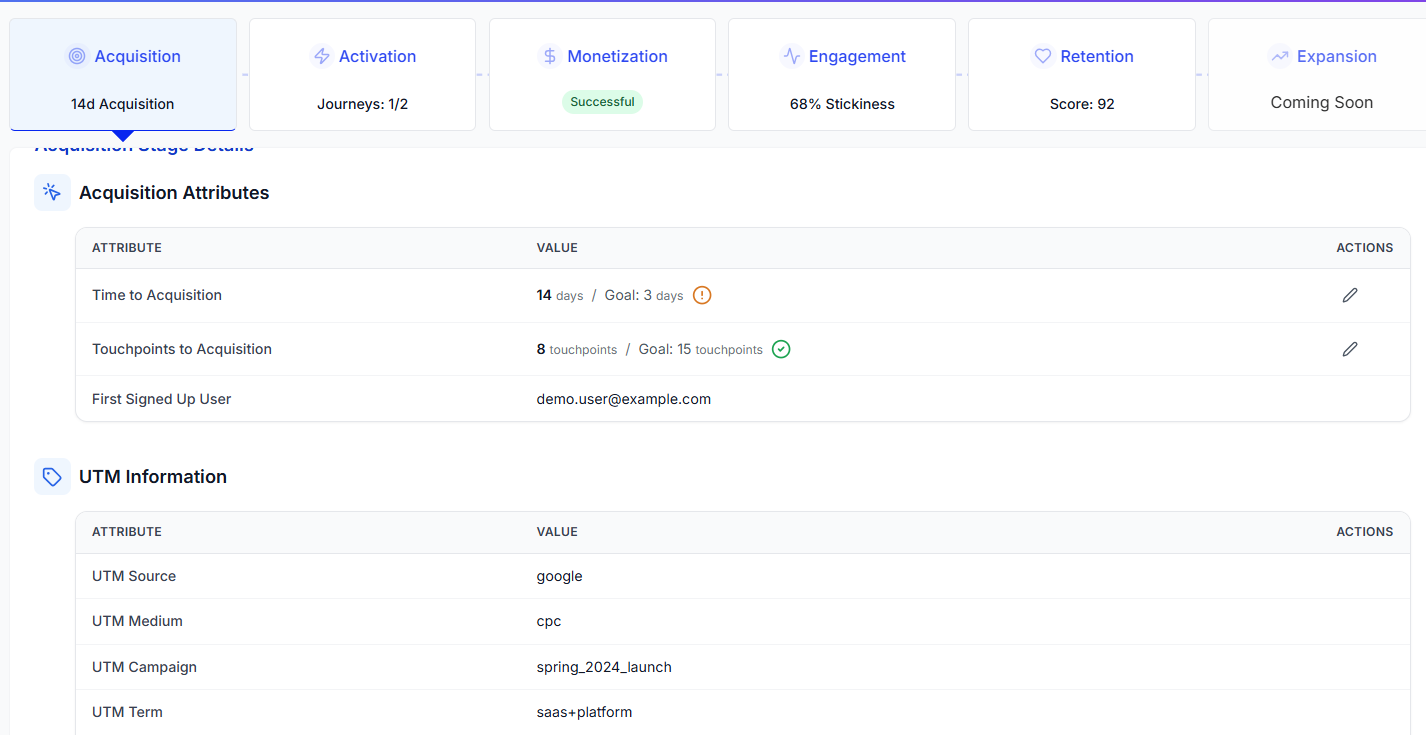By Gururaj Pandurangi | Founder & CEO | Ex-Microsoft, Oracle | 3x SaaS Builder
You don’t lose customers at the point of cancellation.
You lose them the moment they sign up... and do nothing.
In B2B SaaS, churn isn’t a surprise—it’s an outcome. And that outcome is often determined by what happens in the first few hours or days of a user signing up. Not the pricing. Not the features. Not even your NPS.
It’s activation. The crucial phase where users either find value—or find the exit.
This is a hands-on, battle-tested playbook to design activation journeys that do more than walk users through UI—they hook them into habit, product value, and long-term retention.
Let’s get into it.
Step 1: Define Activation Like You Actually Mean It
Most teams confuse getting started with getting value.
Clicking around your UI, completing onboarding steps, or uploading a logo isn’t activation—it’s setup. Activation should be the moment a user experiences the product’s core value for the first time. That “aha” moment.
For example:
- In a project management tool: creating and assigning a first task.
- In an email automation product: sending a live campaign.
- In a collaboration app: inviting a teammate and getting a response.
When I work with SaaS teams, this is often where we start—digging into retention data to trace what actually predicts long-term engagement. It’s rarely what they expect.
Action: Identify 3–5 measurable activation milestones that reflect value, not activity. Use historical retention data to back it.
Step 2: Map the Journey. Find the Leaks.
Most drop-offs aren’t random—they’re predictable, avoidable, and visible if you know where to look.
Start by mapping the journey from signup → activation. Include every click, form, feature, or step. Then, overlay data: Where are users bouncing? What’s causing hesitation?
Use:
- Session recordings to see real behaviors.
- Funnel analytics to track drop-offs.
- Support tickets and live chat transcripts to spot recurring questions.
A 25% increase in user activation leads to a 34% increase in monthly recurring revenue (MRR) over a year, showing the direct financial impact of improving activation journeys. (Source: Userpilot Ultimate Guide to User Activation). This makes it all the more important for you to prioritize activation in your overall growth funnel.
When I first built this out for a client, we discovered that 40% of users were stalling on a single permissions screen—something that took 10 minutes to fix, and saved thousands in churned MRR.
Action: Build a journey map from signup to activation. Annotate the exact points where users fall off or stall—and label those “intervention zones.”
Step 3: One Size Doesn’t Fit Any of Your Users
SaaS users have different jobs-to-be-done depending on their role, company size, or industry. A product manager at a fintech firm doesn’t onboard the same way an ops lead at a healthtech startup does.
Segmentation is the key to relevance:
- Segment by persona (e.g., admin vs. contributor)
- Segment by use case (e.g., collaboration vs. analytics)
- Segment by company traits (e.g., SMB vs. enterprise)
Then, tailor the activation experience for each.
I’ve found that even basic segmentation—just two or three flows—can drive a double-digit lift in activation rates. It doesn’t need to be perfect. It needs to be relevant.
Action: Define 2–3 meaningful user segments. Design tailored activation paths with unique messaging, feature emphasis, and support flows.
Step 4: Multi-Channel or Bust
Onboarding isn’t a one-screen experience—it’s a full communication journey.
That means layering:
- In-app cues like interactive walkthroughs, checklists, progress bars
- Email nudges that reinforce the next step and value prop
- Human touch like concierge onboarding for high-value accounts
But don’t overload users on Day 1. Progressively reveal complexity. Focus first on what delivers immediate value.
When we rolled out a multi-channel flow for a productivity SaaS, activation time dropped from 6 days to just under 2. Simply because we caught users when they weren’t inside the app.
Action: Build a layered plan across in-app, email, and human support. Use behavior-based triggers, not static sequences.
Step 5: Track Everything or You’re Flying Blind
If you’re not measuring it, you’re not managing it.
Instrument every activation milestone from Step 1. That includes:
- Time to first action
- Completion rates per step
- Drop-off windows
- Engagement by segment
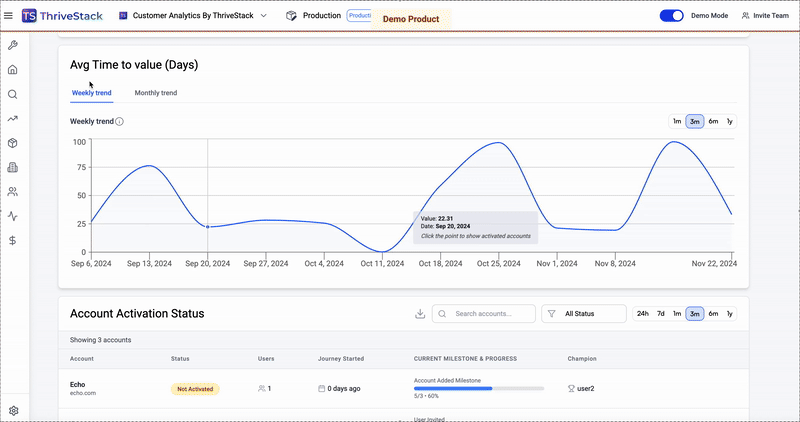
Use this data to spot patterns, run experiments, and fuel automation (see Step 6).
I often tell teams: If your onboarding isn’t giving you signals within 48 hours, you’re missing your best opportunity to intervene.
Action: Set up event tracking across all key actions. Make sure data is clean, structured, and accessible to product, growth, and CS teams.
Step 6: Automate Like a Pro, Not a Robot
Automation isn’t about blasting reminders. It’s about smart, contextual nudges triggered by real behavior.
Start with:
- Behavior-based nudges (e.g., “You started a campaign but didn’t hit send.”)
- Dynamic segmentation (e.g., “Users who skipped Step 3 but completed Step 4”)
- A/B tested flows (to discover the highest-converting activation path)
You can use tools like Customer.io, Braze, or even homegrown logic based on your event layer.
I’ve seen companies waste months building “perfect” automation systems that weren’t grounded in behavior. Start with one trigger. Make it useful. Expand from there.
Action: Set up at least 3 automated flows that react to user behavior. Include success triggers and stall recovery triggers.
Step 7: Reward Momentum, Not Just Milestones
People are wired to respond to progress, not pressure.
Use these tools to create motivation:
- Progress bars showing onboarding completion percentage
- Visual indicators like “You’re 1 step away from activating your account”
- Micro-celebrations when key milestones are hit
- Incentives or unlocks for completing onboarding (e.g., bonus features or credits)
The first time I added a progress bar to an onboarding flow, I was skeptical. It felt like fluff. But within a week, completion rates jumped 18%. Turns out, users just needed a finish line.
Action: Add one progress mechanic and one celebration moment into your onboarding experience. Make your users feel seen.
Step 8: Pipe Activation Data into Your CRM and CS
B2B SaaS companies report an average monthly churn rate of 3.5% in 2025, highlighting why reducing churn through activation journeys is critical for growth and retention. (Source: Hostinger SaaS Statistics 2025)
That said, your CS team shouldn’t have to guess who's stuck, who’s progressing, and who’s likely to churn.
Connect your product data to your CRM (HubSpot, Salesforce, etc.) so CS can:
- Proactively intervene when users stall
- Prioritize accounts showing high activation velocity
- Tailor check-ins based on actual usage
Also feed this data into your marketing ops. Activation status should inform retention campaigns, upsell timing, and lifecycle marketing.
Action: Integrate your activation events with CRM. Build dashboards for CS to take timely, personalized action.
Why This Playbook Works?
Still wondering if all this is worth the effort?
Consider this:
- SaaS companies that optimize activation reduce churn by up to 50%.
- A 5% retention lift can increase company valuation by 25–95%.
- And 70% of users who don’t activate in 90 days? Gone.
In other words, activation isn’t just a stage—it’s the moment of truth.
If you nail it, everything else gets easier: retention, expansion, referrals, CAC payback. If you don’t, you’re pouring leads into a leaky funnel.
Conclusion
Your activation journey is your product’s first real conversation with the user.
Get it right, and they stick around. Get it wrong, and they disappear—silently.
I’ve seen both outcomes. One leads to exponential growth. The other leads to customer success teams scrambling to fix what onboarding didn’t.
So stop thinking of onboarding as a UI flow. Think of it as a growth engine. One that’s powered by clarity, triggered by behavior, and fine-tuned through data.
Your Activation Game Plan (Bookmark This)
- Define 3–5 activation milestones tied to real value
- Map the full journey and flag friction zones
- Segment users and personalize their paths
- Build multi-channel, behavior-driven flows
- Track every key action and inaction
- Automate nudges, not nags
- Add progress indicators and emotional triggers
- Sync activation data with CRM & CS for action
You don’t need more signups.
You need more users getting value—and sticking around.
And it all starts with better activation.
At ThriveStack, we help SaaS teams design data-driven activation journeys that drive retention, revenue, and customer success.
Book a Free Growth Audit Now
Turn first-time users into lifelong customers—starting today.
FAQ
1. What is SaaS activation, and why is it critical?
SaaS activation is the process where a user first experiences your product’s core value. It’s crucial because activation strongly predicts long-term retention. If users don’t activate, churn becomes inevitable
2. How do I know if my activation journey is broken?
Look for signs like high drop-offs during onboarding, low engagement post-signup, or support tickets about setup confusion. Mapping user journeys and analyzing funnel data will reveal these gaps.
3.Should I create different activation paths for different user personas?
Yes. Segmented activation paths lead to higher engagement. Tailor the journey based on role, company size, or use case to make onboarding relevant and personalized.
4. How long should SaaS activation take?
It depends on your product, but the faster the better. Aim for users to experience the first “aha moment” within 24–48 hours. The longer activation takes, the higher the risk of churn.
5. What tools can help automate SaaS activation flows?
Tools like Customer.io, Braze, Userpilot, and HubSpot help build behavior-based workflows, track milestones, and send personalized nudges across channels.


